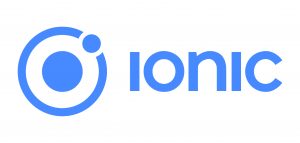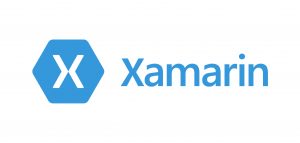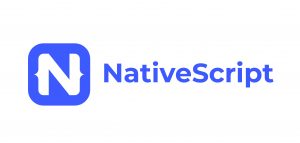Cross-platform frameworks allow developers to create a mobile solution that is simultaneously compatible with different operating systems and platforms. That can help businesses expand the reach of a mobile app while also controlling the development costs. As a result, most companies prefer cross-platform mobile app development over native mobile app development.
Let’s compare and contrast the top five mobile application frameworks: React Native, Flutter, Ionic, Xamarin, and Nativescript.
React Native

React Native is an open-source user interface (UI) software framework created by Meta Platforms, Inc., formerly Facebook. It’s used with native platform capabilities to develop applications for Android, Android TV, iOS, macOS, tvOS, web, Windows, and UWP.
Pros of React Native
- Has a single codebase for multiple applications
- Incorporates JavaScript, used by many programmers
- More choices for solutions, depending on the project’s requirements and the developer’s preferences
- Extensive libraries and UI frameworks
- Established a community of developers
- Less debugging time
- Easy to learn
Cons of React Native
- UI experience and performance are close to native applications, but not the same
- Some libraries are of low quality, and others have been abandoned
- Requires a timely decision on which navigation package to use
- Upgrades for app components are needed for every OS UI update
Flutter

Flutter is an open-source UI software development kit created by Google. It is used to develop cross-platform applications for Android, iOS, Linux, macOS, Windows, Google Fuchsia, and the web from a single codebase.
Pros of Flutter
- Allows developers to make changes in their codebase without restarting the application to reflect the updates
- Can create apps for both iOS and Android platforms with one codebase
- Lower debugging and testing time
- Uses Skia Graphics Library for fast and smooth performance
- Developers can experiment without spending money on licensing fees
- Apps look the same on older iOS or Android systems
- Easy to create a user-friendly UI
Cons of Flutter
- Apps are bigger in size than native ones
- The community of experienced Flutter developers is not yet as wide and established as others
- Dart programming language for Flutter is not as widely used
- We may need to build customized functionalities
- Reliant on continuous support from Google over the long term
Ionic

Ionic is an open-source UI toolkit for creating hybrid cross-platform mobile applications. It uses Webview for mobile instead of using native device elements. The framework leverages familiar JavaScript codebases and has multiple component presets that provide native functionality.
Pros of Ionic
- Reduces the time, effort, and resources employed to build a cross-platform application while giving it a native look and feel
- Saves build time by providing a simplistic interface for accessing native SDK and native API on each platform
- Creates a single codebase by using familiar Javascript frameworks and libraries, reducing code rewrites
- Scales efficiently as the number of active users doesn’t affect its performance
Cons of Ionic
- Developers may need to create highly specific features
- Refreshes the whole app whenever the developer makes some changes, affecting the development speed
- Older versions won’t provide code uglification
Xamarin

Owned by Microsoft, Xarmain uses a C#-shared codebase that developers can use to write native Android, iOS, and Windows apps with native user interfaces and share code across multiple platforms, including Windows, macOS, and Linux.
Pros of Xamarin
- Uses C# with .Net framework to create apps for any mobile platform
- Cross-platform development tools as a built-in part of the IDE at no additional cost
- Apps can still be classified as native
- Good app performance
- Can build platform-specific UI elements
- Many libraries are available and support linking with native libraries
- Eliminates hardware compatibility issues
- Vibrant community
- Hot reload
- Supports TVs, wearables, and IoT
Cons of Xamarin
- Slightly delayed support for platform updates
- Limited access to open-source libraries
- Costs for professional and enterprise use
- Limited developer pool and community
- Still need basic knowledge of native languages
- Larger app size
- Compatibility issues with third-party libraries and tools
Nativescript

NativeScript is an open-source framework that builds cross-platform applications for iOS and Android using JavaScript. NativeScript also has a rendering engine that provides native performance and user experience.
Pros of NativeScript
- Uses Angular, TypeScript, or JavaScript for convenient data binding and more component reusability
- Accesses native device API via native components developed with native performance
- Uses a markup language like HTML to develop applications with customized features
- Complete and direct access to all kinds of iOS and Android APIs
- NativeScript CLI allows multiple functions like adding a platform or deploying apps to a specific platform or device
- Faster installation of plugins and app debugging
Cons of NativeScript
- Requires learning different UI components
- Fewer verified plugins
- Developers must know the native functionality and APIs of iOS and Android to access the hardware of a device and any other platform-specific elements
- The app must be tested on an emulator or an actual device, which slows the testing process
Why Should You Choose InApp?
Learn how MPulse Software relies on InApp to keep its software updated to meet evolving technology and customer needs, using a range of technology that includes Flutter, Microsoft .NET, C#, Microsoft SQL Server, Microsoft Ajax Tool Kit, and more. It’s a business relationship that’s enabled MPulse to grow over the years, as well as to keep up with rapid software technology changes.
Bottomline
Cross-platform mobile app development expands the potential market reach of a mobile app by making it faster and easier to deploy on all major platforms, as well as more affordable for companies.
InApp’s mobile app development engineers ensure your software works seamlessly across platforms on a range of mobile devices. Learn more about cross-platform app development services from our experts. We’re here to help.
